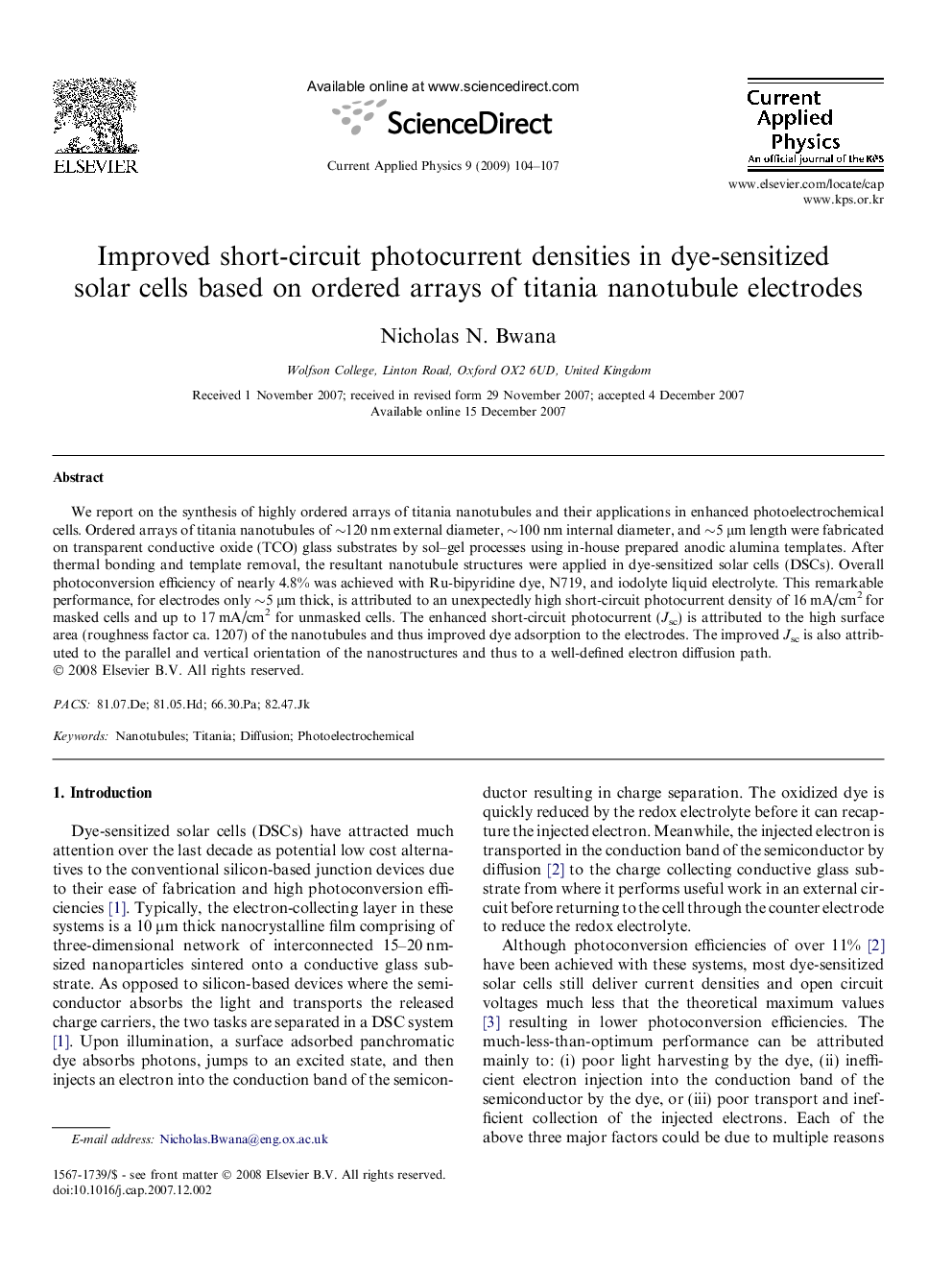| Article ID | Journal | Published Year | Pages | File Type |
|---|---|---|---|---|
| 1789327 | Current Applied Physics | 2009 | 4 Pages |
We report on the synthesis of highly ordered arrays of titania nanotubules and their applications in enhanced photoelectrochemical cells. Ordered arrays of titania nanotubules of ∼120 nm external diameter, ∼100 nm internal diameter, and ∼5 μm length were fabricated on transparent conductive oxide (TCO) glass substrates by sol–gel processes using in-house prepared anodic alumina templates. After thermal bonding and template removal, the resultant nanotubule structures were applied in dye-sensitized solar cells (DSCs). Overall photoconversion efficiency of nearly 4.8% was achieved with Ru-bipyridine dye, N719, and iodolyte liquid electrolyte. This remarkable performance, for electrodes only ∼5 μm thick, is attributed to an unexpectedly high short-circuit photocurrent density of 16 mA/cm2 for masked cells and up to 17 mA/cm2 for unmasked cells. The enhanced short-circuit photocurrent (Jsc) is attributed to the high surface area (roughness factor ca. 1207) of the nanotubules and thus improved dye adsorption to the electrodes. The improved Jsc is also attributed to the parallel and vertical orientation of the nanostructures and thus to a well-defined electron diffusion path.
